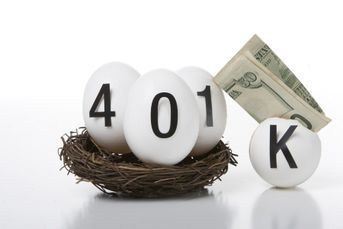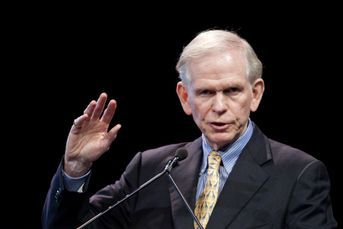Bill Gross bulls butt heads with bears in great bond debate
With Treasury yields at historically low levels, the stakes are rising as the Fed cuts back the bond buying that's held down borrowing costs on trillions of dollars of debt from governments to companies and individuals.
The gulf between bulls and bears has never widened so quickly in the $12 trillion market for U.S. government bonds.
The proportion of investors betting on gains or losses in Treasuries, rather than holding a neutral view, almost doubled this year to 51%, a client survey by JPMorgan Chase & Co. showed. The 23 percentage-point jump is the most for the period since the top-ranked firm for U.S. fixed-income research by Institutional Investor magazine began its weekly survey in 2003.
With Treasury yields at historically low levels, the stakes are rising as the Federal Reserve cuts back the bond buying that’s held down borrowing costs on trillions of dollars of debt from governments to companies and individuals. The debate pits Pacific Investment Management Co.’s Bill Gross, who says yields can stay low because growth and interest rates won’t return to pre-crisis levels, against market-rules theorist Robert Farrell, who contends asset prices always revert toward the average.
(Mr. Gross doesn’t have a lot of company as he charts own path with bonds that rivals shun)
“With yield levels so low it’s very difficult to be neutral,” Jack McIntyre, a money manager at Brandywine Global Investment Management, which oversees $44.5 billion, said. “At this point in the game you either believe, or you don’t.”
Mr. McIntyre, who runs a global bond fund, prefers Treasuries to other high-quality government debt such as German bunds.
BOND DIVIDE
The 2.81% return on Treasuries this year, the biggest over the period since 2010 based on the Bloomberg U.S. Treasury Bond Index, has been propelled as uneven jobs growth, a lack of inflation and the conflict in Ukraine burnished the appeal of U.S. government debt.
The gains upended the predictions of most forecasters, who foresaw losses pushing yields higher for a second straight year as the Fed pared its $85 billion-a-month bond buying program and the five-year U.S. expansion finally took hold.
Yields on the 10-year note, the benchmark for everything from mortgages to corporate bonds and emerging-market government debt, have fallen instead. From the start of the year, they have decreased a half-percentage point to end at 2.59% last week, close to average since the recession ended in June 2009.
In each of the three prior U.S. expansions dating back to 1982, 10-year yields averaged more than 4%, according to data compiled by Bloomberg.
With yields so low, the divide among bulls and bears has increased. While more than 70% of respondents to JPMorgan’s weekly survey, which includes institutions as varied as hedge funds, pensions and central banks, held a neutral view on Treasuries at the start of 2014, a majority now anticipate either gains or losses.
At the same time, the percentage with bearish outlooks has more than doubled to an almost eight-year high of 40%.
“It’s been a disorienting environment,” Robert Tipp, the chief investment strategist at Prudential Financial Inc.’s fixed-income unit, which oversees $335 billion, said.
He said yields can stay low because lackluster growth in the U.S. economy, which contracted in the first quarter, means there won’t be enough inflation to compel the Fed to raise interest rates much before stopping.
The Fed has held its benchmark rate close to zero since 2008, and trading in the futures and swaps markets suggest the rate will remain below 2% through March 2017.
NEGATIVE RATES
One reason the Fed’s preferred measure of inflation has failed to reach its 2% goal for 24 consecutive months is because wage growth has been slow to rebound.
Hourly earnings have increased 2.1% on average since the recession ended, a percentage point less than during the prior expansion, according to the Bureau of Labor Statistics.
The lack of pricing pressure aligns with the “new neutral” view on rates and the economy that Mr. Gross, the Newport Beach, Calif.-based co-founder of Pimco, the world’s biggest bond fund manager, says will remain in place for years to come.
The European Central Bank’s unprecedented package of stimulus measures introduced last week, including its decision to cut the deposit rate to minus 0.1%, is also helping make Treasuries more attractive on a relative basis.
Ten-year Treasuries yield 1.25 percentage points more than German bunds, the most since 1999, data compiled by Bloomberg show. Italian and Spanish bond yields ended below 3% for the first time on record last month, while yields on French notes fell to an all-time low of 1.656% last week.
“Treasuries are in a good spot,” Jeffrey Rosenberg, the chief investment strategist for fixed-income at BlackRock Inc., the world’s largest asset manager overseeing $4.4 trillion, said by telephone. In an environment of zero rates, “the relative yield conversation dominates the agenda.”
For the bears, investors in Treasuries risk being lulled into complacency by failing to realize how far yields have fallen from historical averages as the U.S. economy strengthens, according to David Rosenberg, the chief economist at Gluskin Sheff & Associates and a disciple of Mr. Farrell.
Mr. Rosenberg predicts U.S. consumer prices will reach 3% in the next 12 months to 24 months. The consumer price index measured by the Labor Department rose 2% in April from a year earlier, the most since July.
“The bond market is divorced from economic reality,” he said. “There are hurdles in the post-crisis world and the economy still has warts, but this is not 2008.”
‘SUBSTANTIAL RISK’
Employment gains in May pushed U.S. payrolls past their pre-recession peak and the jobless rate held at an almost six-year low. Forecasters are also sticking to their calls that the world’s largest economy will expand 3.1% next year, the fastest pace in a decade, a Bloomberg survey showed.
The notion that yields, which never dipped below 3% in the half century before the credit crisis, can stay this low would also violate one of Mr. Farrell’s market rules that stipulates markets always revert to long-run averages.
The rules, developed during his 25-year stint as chief strategist at Merrill Lynch from 1967 to 1992, helped earn him Institutional Investor’s award for overall market direction 16 times over 17 years. Mr. Farrell, who has since retired, declined to comment on the direction of yields.
“There is substantial risk being bullish on Treasuries,” Jennifer Vail, the Minneapolis-based head of fixed-income research at U.S. Bank Wealth Management, which oversees $112 billion, said. “Rates are absolutely headed higher.”
She said yields on the 10-year note will rise to 3.4% by the end of the year.
Growth and demand hasn’t picked up enough to abandon Treasuries, especially when Fed Chair Janet Yellen said on May 7 that there will be “considerable time” before the central bank raises interest rates, according to Tad Rivelle, the Los Angeles-based chief investment officer for U.S. fixed-income securities at TCW Group Inc., which manages more than $130 billion and holds shorter-term Treasuries.
“This is no time to be a hero,” he said.
(Bloomberg News)
Learn more about reprints and licensing for this article.








